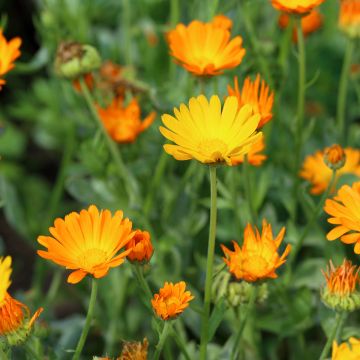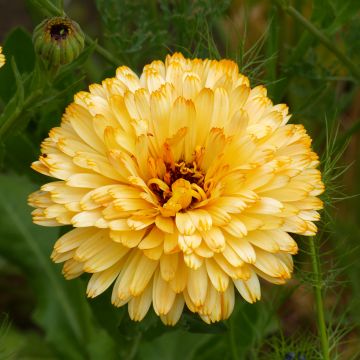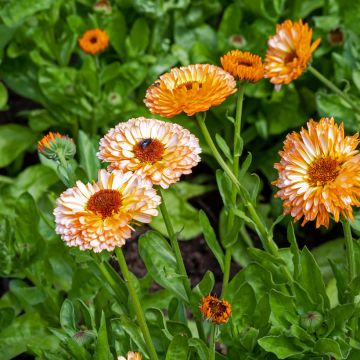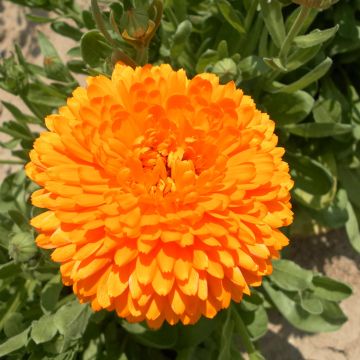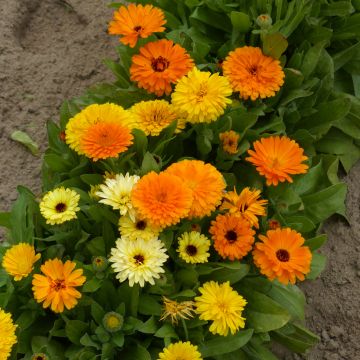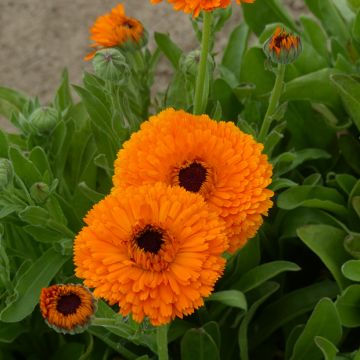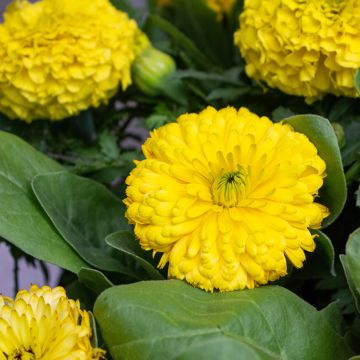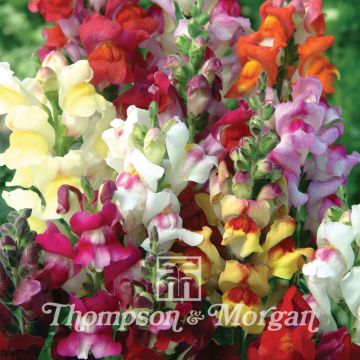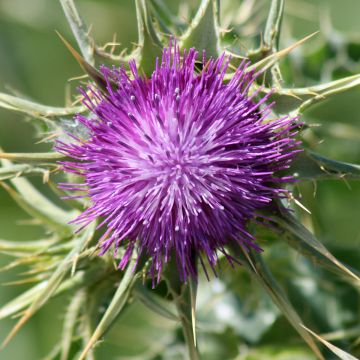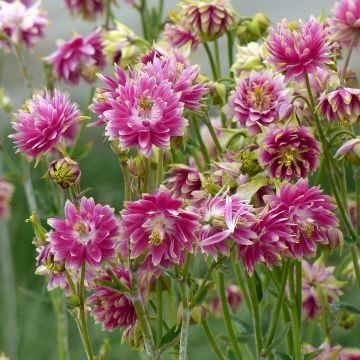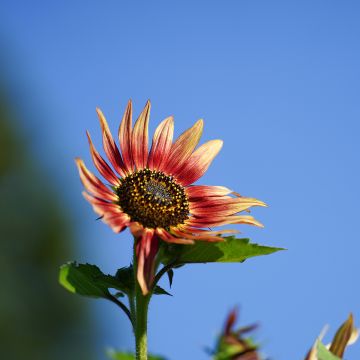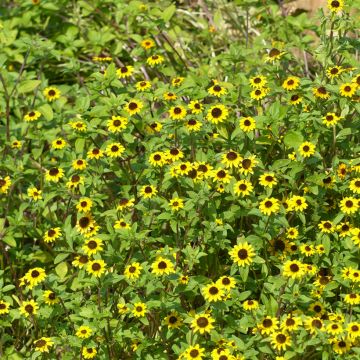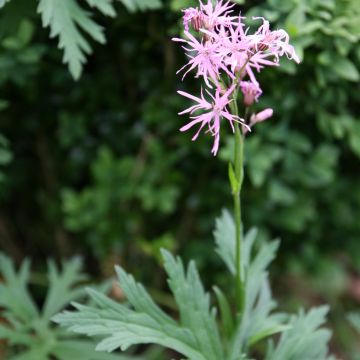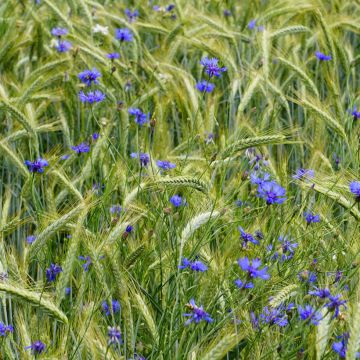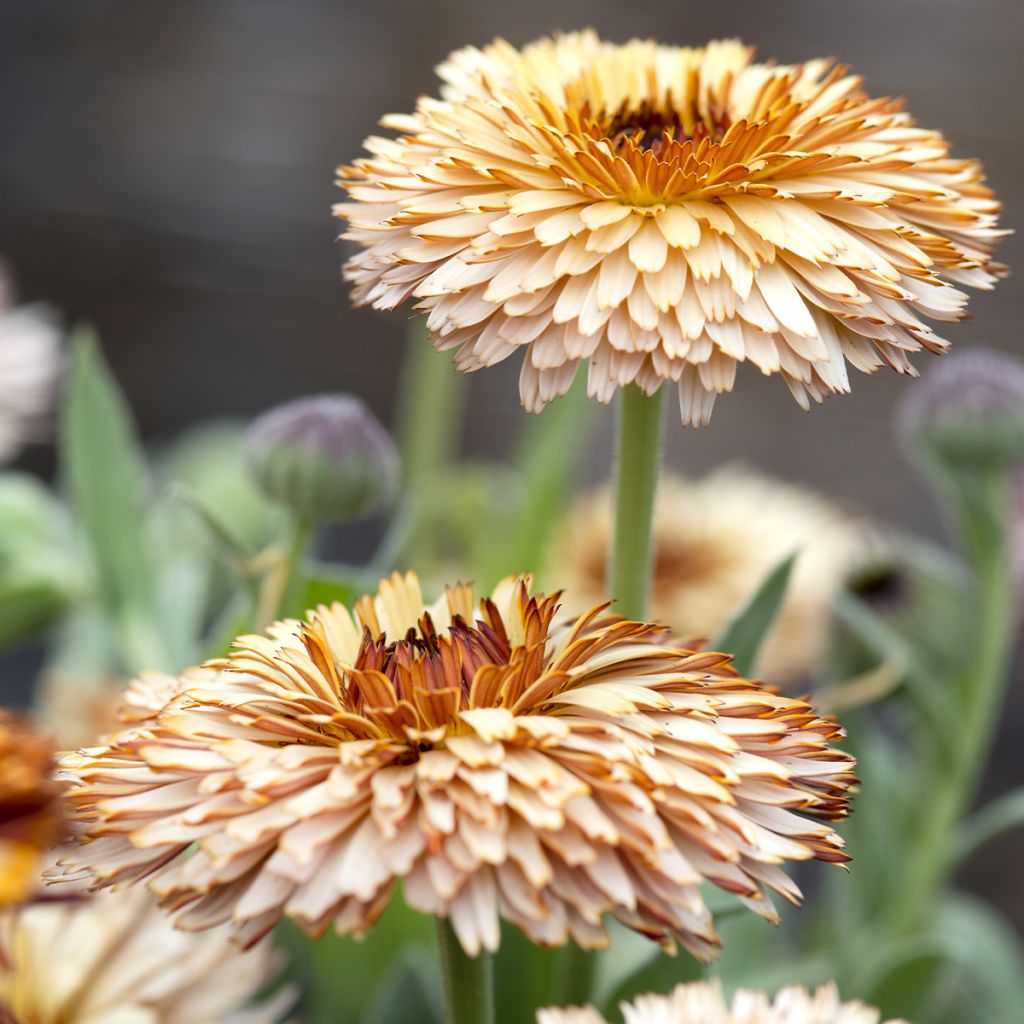

Calendula officinalis Pygmy Buff
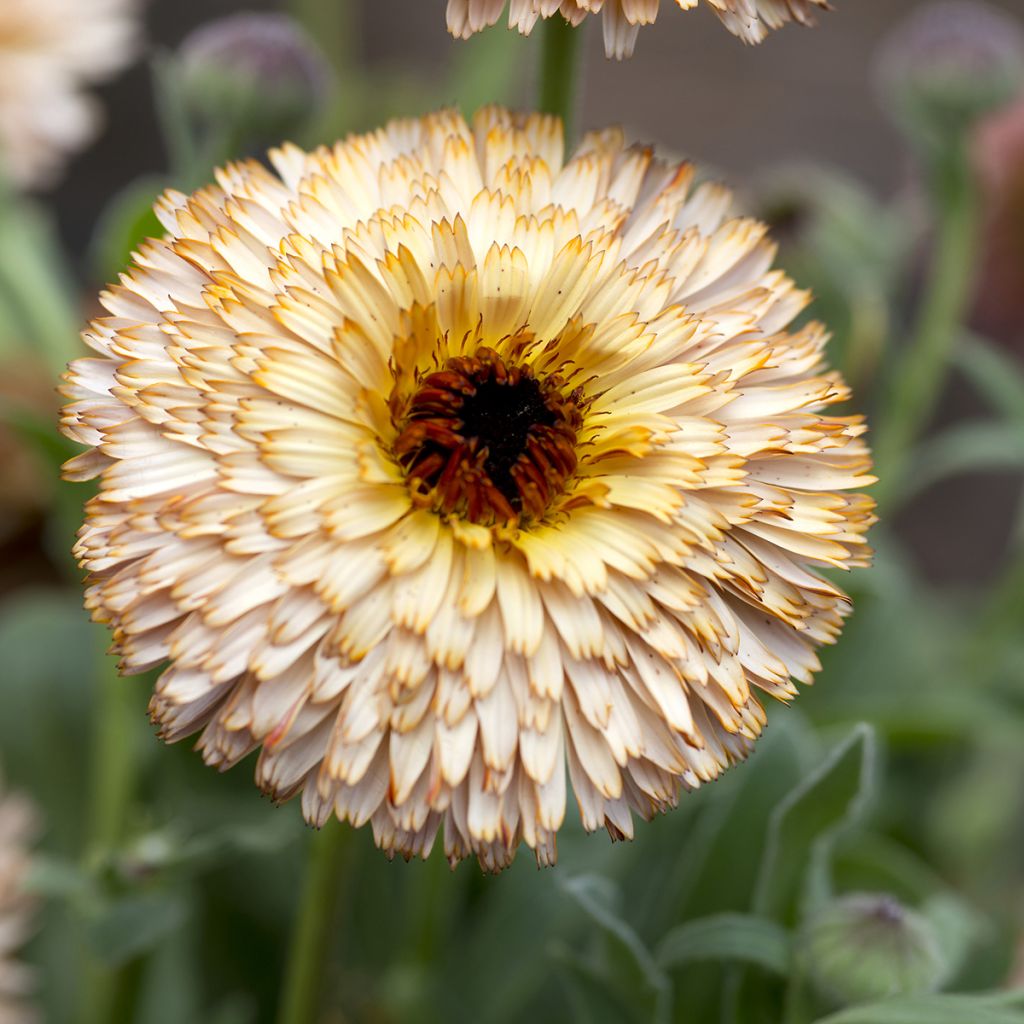

Calendula officinalis Pygmy Buff
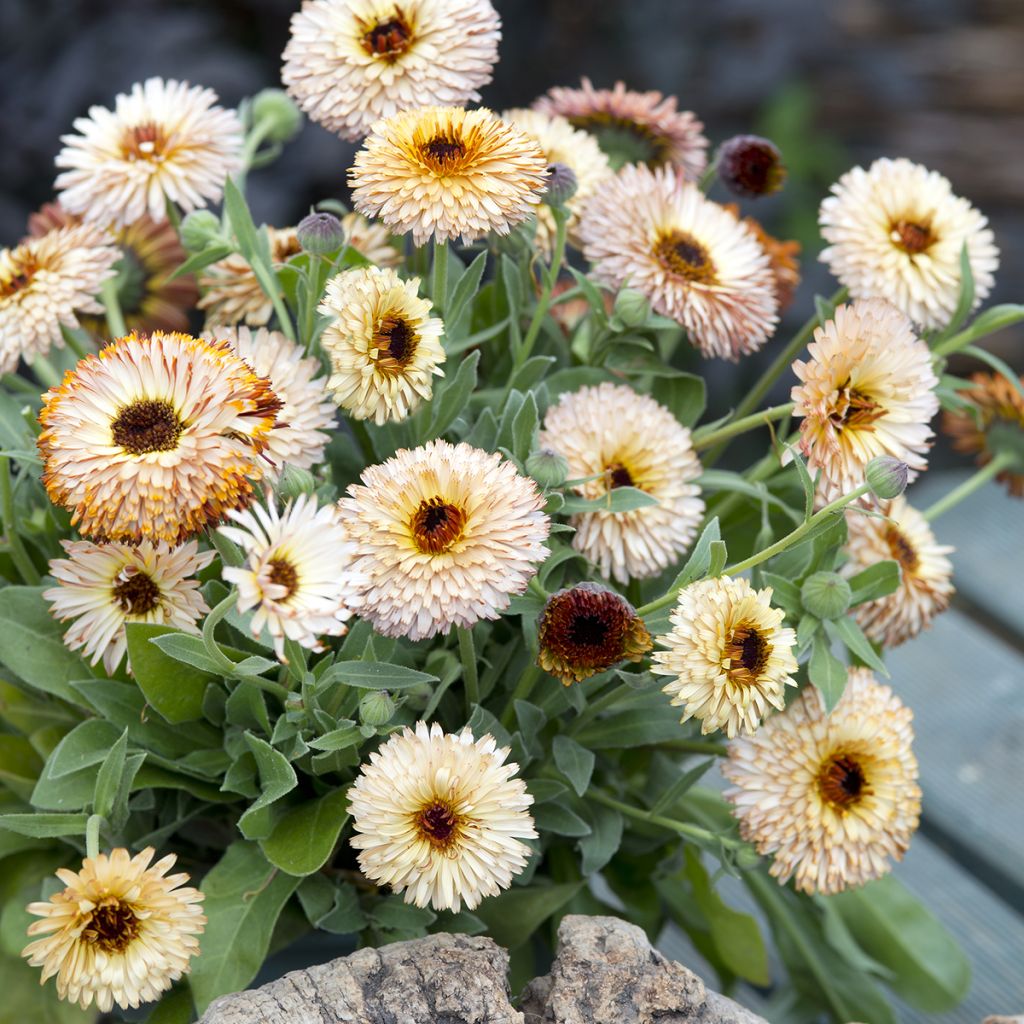

Calendula officinalis Pygmy Buff
Calendula officinalis Pygmy Buff
Calendula officinalis Pygmy Buff
Pot Marigold, Common Marigold, Garden Marigold, English Marigold
Special offer!
Receive a €20 voucher for any order over €90 (excluding delivery costs, credit notes, and plastic-free options)!
1- Add your favorite plants to your cart.
2- Once you have reached €90, confirm your order (you can even choose the delivery date!).
3- As soon as your order is shipped, you will receive an email containing your voucher code, valid for 3 months (90 days).
Your voucher is unique and can only be used once, for any order with a minimum value of €20, excluding delivery costs.
Can be combined with other current offers, non-divisible and non-refundable.
Home or relay delivery (depending on size and destination)
Schedule delivery date,
and select date in basket
This plant carries a 6 months recovery warranty
More information
We guarantee the quality of our plants for a full growing cycle, and will replace at our expense any plant that fails to recover under normal climatic and planting conditions.
Would this plant suit my garden?
Set up your Plantfit profile →
Description
Calendula officinalis 'Pygmy Buff' is a recent variety of Marigold awarded at the Fleuroselect competition for its unique colour: the reverse side of its petals is a beautiful buff copper and its large double flower unfolds to reveal the inner side of its petals in a creamy apricot colour, around a lovely brown or almost black centre. This annual brings softness and uniqueness to sunny borders and bouquets. Easy to grow in ordinary soil, it should be sown in March-April for a long flowering period from May to the first frost.
Calendula officinalis 'Pygmy Buff' is a plant belonging to the Asteraceae family, with characteristic flowers in the shape of a daisy. It has an upright, slightly spreading habit, and its branching stems are brittle, giving it a bushy appearance. At full maturity, this 'Pygmy Buff' variety reaches a height of 45 cm (18in) during flowering and spreads over 30 cm (12in). Its lanceolate leaves are velvety and release a very aromatic fragrance when crushed. Their bright green colour contrasts with the pastel flowers of the plant, in shades of copper, buff, apricot, and cream, with a dark yellow centre. Flowering begins in May and continues regularly until the first frost, attracting many pollinating insects. Each head measures approximately 6 cm (2in) in diameter and is composed of a centre of fertile florets surrounded by numerous long 'petals'. These 'petals' are actually ligulate flowers grouped in a crown. This crown opens when exposed to the sun and closes at night or in cloudy weather. The seeds of Calendula officinalis 'Pygmy Buff' easily spread in different ways: by wind, by falling to the ground and sticking to clothes and animal hair, as they have small claws. They self-seed and their germination is not hindered by cold temperatures. Seedlings adapt to various types of soil, provided they receive sun exposure for a good part of the day.
Calendula 'Pygmy Buff' has very beautiful colours, distinguished and rare in the garden, which are enjoyable to combine with the blue of love-in-a-mist, the purple of lavenders, but also with Cosmos, Poppies, and Alliums. This Marigold can be planted in borders and containers, as a single plant or in groups. It pairs beautifully with the wide range of colors of small dahlias in the company of the golden hues of grasses, which perfectly complement its copper colour. Calendula is also an edible flower, to be enjoyed in moderation, and can be used in salads, soups, and desserts. Some say its flavour resembles that of pepper.
Listed in gardens since the 12th century, Calendula officinalis has virtues that are exploited in many fields. It is first and foremost a dye plant, used as a pigment. It is also used in cosmetics, pharmacology, and homeopathy for its soothing, astringent, healing, anti-inflammatory, and hepatic properties, among others. Finally, its nickname of False Saffron comes from its culinary use. Calendula can replace this spice by colouring rice dishes, as well as stews, soups, and herbal teas. When raw, it adds fragrance to cheeses, salads, and even butter. Moreover, it has long been established in vegetable gardens as an ally to other edible plants, as it repels nematodes and attracts many pollinating insects.
Report an error about the product description
Calendula officinalis Pygmy Buff in pictures
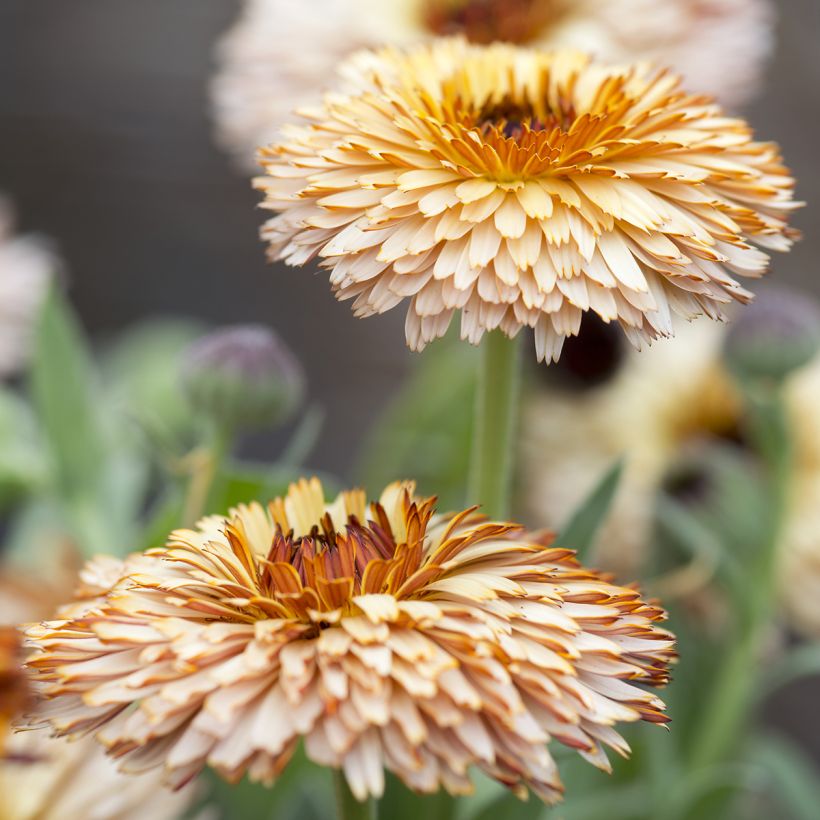



Flowering
Foliage
Plant habit
Botanical data
Calendula
officinalis
Pygmy Buff
Asteraceae
Pot Marigold, Common Marigold, Garden Marigold, English Marigold
Cultivar or hybrid
Other Marigold seeds
View all →Planting and care
Marigold seeds can be sown directly in the garden from March onwards in mild regions. If you are in a colder region, wait until the last frost has passed, as the seeds prefer temperatures around 20°C (68°F). Loosen the soil slightly and choose a sunny location. The seeds should be scattered on the soil, covered with 1 or 2 mm (0.1in) of soil, and lightly watered. They will germinate in 5 to 10 days, and if necessary, you can thin them out by spacing them 30 cm (12in) apart.
However, if you are not concerned about winter frost, you can start your seeds in September by sowing them in pots and keeping them indoors until spring. Then, in March, you can transplant the young plants into containers or directly into the ground for an earlier blooming.
Growing:
Marigolds are fast-growing plants that thrive in full sun or partial shade in warm climates and sheltered areas. They are undemanding, as long as they are planted in well-drained, moderately fertile, and light soil. Protect the plants from slugs and snails, which are fond of them.
Sowing period
Intended location
This item has not been reviewed yet - be the first to leave a review about it.
Similar products
Haven't found what you were looking for?
Hardiness is the lowest winter temperature a plant can endure without suffering serious damage or even dying. However, hardiness is affected by location (a sheltered area, such as a patio), protection (winter cover) and soil type (hardiness is improved by well-drained soil).

Photo Sharing Terms & Conditions
In order to encourage gardeners to interact and share their experiences, Promesse de fleurs offers various media enabling content to be uploaded onto its Site - in particular via the ‘Photo sharing’ module.
The User agrees to refrain from:
- Posting any content that is illegal, prejudicial, insulting, racist, inciteful to hatred, revisionist, contrary to public decency, that infringes on privacy or on the privacy rights of third parties, in particular the publicity rights of persons and goods, intellectual property rights, or the right to privacy.
- Submitting content on behalf of a third party;
- Impersonate the identity of a third party and/or publish any personal information about a third party;
In general, the User undertakes to refrain from any unethical behaviour.
All Content (in particular text, comments, files, images, photos, videos, creative works, etc.), which may be subject to property or intellectual property rights, image or other private rights, shall remain the property of the User, subject to the limited rights granted by the terms of the licence granted by Promesse de fleurs as stated below. Users are at liberty to publish or not to publish such Content on the Site, notably via the ‘Photo Sharing’ facility, and accept that this Content shall be made public and freely accessible, notably on the Internet.
Users further acknowledge, undertake to have ,and guarantee that they hold all necessary rights and permissions to publish such material on the Site, in particular with regard to the legislation in force pertaining to any privacy, property, intellectual property, image, or contractual rights, or rights of any other nature. By publishing such Content on the Site, Users acknowledge accepting full liability as publishers of the Content within the meaning of the law, and grant Promesse de fleurs, free of charge, an inclusive, worldwide licence for the said Content for the entire duration of its publication, including all reproduction, representation, up/downloading, displaying, performing, transmission, and storage rights.
Users also grant permission for their name to be linked to the Content and accept that this link may not always be made available.
By engaging in posting material, Users consent to their Content becoming automatically accessible on the Internet, in particular on other sites and/or blogs and/or web pages of the Promesse de fleurs site, including in particular social pages and the Promesse de fleurs catalogue.
Users may secure the removal of entrusted content free of charge by issuing a simple request via our contact form.
The flowering period indicated on our website applies to countries and regions located in USDA zone 8 (France, the United Kingdom, Ireland, the Netherlands, etc.)
It will vary according to where you live:
- In zones 9 to 10 (Italy, Spain, Greece, etc.), flowering will occur about 2 to 4 weeks earlier.
- In zones 6 to 7 (Germany, Poland, Slovenia, and lower mountainous regions), flowering will be delayed by 2 to 3 weeks.
- In zone 5 (Central Europe, Scandinavia), blooming will be delayed by 3 to 5 weeks.
In temperate climates, pruning of spring-flowering shrubs (forsythia, spireas, etc.) should be done just after flowering.
Pruning of summer-flowering shrubs (Indian Lilac, Perovskia, etc.) can be done in winter or spring.
In cold regions as well as with frost-sensitive plants, avoid pruning too early when severe frosts may still occur.
The planting period indicated on our website applies to countries and regions located in USDA zone 8 (France, United Kingdom, Ireland, Netherlands).
It will vary according to where you live:
- In Mediterranean zones (Marseille, Madrid, Milan, etc.), autumn and winter are the best planting periods.
- In continental zones (Strasbourg, Munich, Vienna, etc.), delay planting by 2 to 3 weeks in spring and bring it forward by 2 to 4 weeks in autumn.
- In mountainous regions (the Alps, Pyrenees, Carpathians, etc.), it is best to plant in late spring (May-June) or late summer (August-September).
The harvesting period indicated on our website applies to countries and regions in USDA zone 8 (France, England, Ireland, the Netherlands).
In colder areas (Scandinavia, Poland, Austria...) fruit and vegetable harvests are likely to be delayed by 3-4 weeks.
In warmer areas (Italy, Spain, Greece, etc.), harvesting will probably take place earlier, depending on weather conditions.
The sowing periods indicated on our website apply to countries and regions within USDA Zone 8 (France, UK, Ireland, Netherlands).
In colder areas (Scandinavia, Poland, Austria...), delay any outdoor sowing by 3-4 weeks, or sow under glass.
In warmer climes (Italy, Spain, Greece, etc.), bring outdoor sowing forward by a few weeks.






























